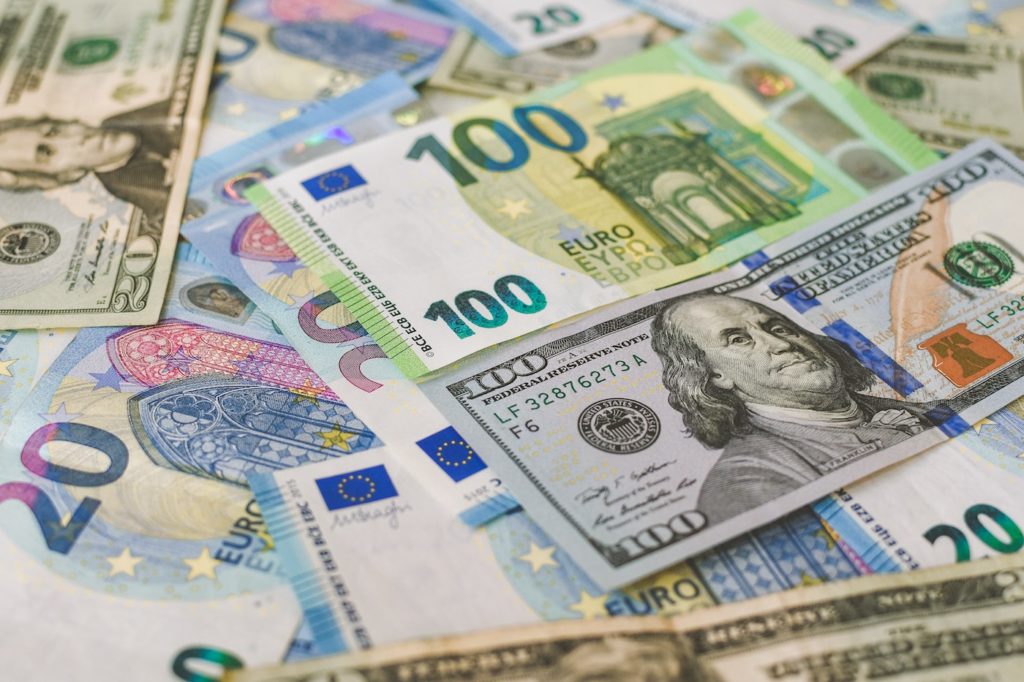During the last few months, most economic headlines have focused on inflation. No wonder: prices in both the United States and the Eurozone have risen at their fastest pace since 1981.
Since higher prices harm the middle and working classes the most, rising inflation poses a threat to most Americans’ financial well-being. This fact became evident this month, when the US Consumer Index Sentiment plunged to a record low of 50. In short, this index represents the consumers’ assessments of their own financial situation and overall economic condition. Consumers have never been as worried about their finances as they are today.
Because inflation has created financial anxieties for many Americans, plans that promise quick fixes can be tempting. But, as I’ve noted before, policies like price fixing would probably be cataclysmic. One helpful way to better grasp our current situation is to explore the differences between America’s and Europe’s inflation rates. This way, Americans will better understand the causes of their inflation, and accordingly, advocate the right policies for its relief—namely, policies to tighten their country’s monetary policy.
Understanding CPI and Core Inflation
Start your day with Public Discourse
Sign up and get our daily essays sent straight to your inbox.In the United States, the inflation rate is tracked by the Consumer Price Index (CPI), published by the Bureau of Labor Statistics. The CPI determines the country’s inflation rate by monitoring the prices of a fixed basket of goods that represent an average family of four’s purchases.
Since 2021, the CPI has been increasing. In the last twelve months, the CPI has risen by 8.6 percent, which is the highest annual increase since 1981. Moreover, just in May, it increased by 1 percent, which is well above its April rate.
When prices began to rise, notable government officials disregarded them as temporary increases. Secretary of the Treasury Janet Yellen, for example, said in May 2021 that there was not a “significant risk” of inflation in the long term. Similarly, Federal Reserve Chair Jerome Powell told the Senate Banking Committee, “I really do not expect we’ll be in a situation where inflation rises to troublesome levels.”
Over a year has gone by, and it’s clear that inflation is everything but transitory. This isn’t an opinion, but a fact established by measuring the “core inflation rate.” Core inflation is determined by removing the components of the CPI that are considered volatile in the short run—such as the abnormal fluctuations in the energy and food markets caused by the war in Ukraine.
By looking our core inflation, we see that prices have risen by 6 percent in the last year. Just in May, core CPI rose by 0.6 percent. Given these trends, it is safe to assume that the country’s inflation rate is not a function of any short-run market volatility.
In fact, the data suggest that over the last year, the magnitude of the fiscal and monetary policy of the US government has been driving prices up in a systematic manner. If we add Biden’s $2.5 trillion stimulus program to Trump’s $900 billion programs at the end of his tenure, then the total stimulus to the US economy reached $3.4 trillion. This is roughly 15 percent of the United States’ GDP and roughly three times the economic output lost during the pandemic. Together, these programs overheated the US economy by pushing it beyond its productive capacity, driving prices upward as a result. I foresaw this scenario back in February 2021, before inflation started to gain momentum.
Over a year has gone by, and it’s clear that inflation is everything but transitory. This isn’t an opinion, but a fact established by measuring the “core inflation rate.”
Inflation in Europe
In the Eurozone, on the other hand, inflation is mainly the result of exogenous shocks to the economy, which is why it will probably be transitory. We know this because there is a significant wedge between Europe’s headline inflation and core inflation: its inflation rate stands at 8.1 percent, while its core inflation rate is only 3.8 percent.
This means that while the inflation rates of the United States and Eurozone have a similar magnitude—both are around 8 percent—their dynamics are fundamentally different. While most of the US inflation rate is driven by its monetary policy, the majority of the European inflation is driven by the short-term volatility of key sectors. For instance, because of the war in Ukraine, natural gas prices in Europe are nearly three times higher than they are in the United States.
Furthermore, some of the core inflation in Europe is, in fact, the result of the United States being able to externalize some of the inflationary costs associated with its monetary policy. US stimulus money has allowed Americans to spend an additional $600 billion on goods since 2020. This excess spending coincided with the world’s supply chain issues, which led to higher prices worldwide. By contrast, Europe’s demand during this period fell below its pre-pandemic levels. Europe is essentially absorbing part of the inflation produced by the United States without receiving the short-term purchasing power benefits of its monetary stimulus.
These dynamics are the reason Europe and America have differed in most economic indicators. For instance, while nominal wages have grown at a 6 percent rate in the United States in the last year, Europe’s has risen just by 3.8 percent. And while the United States is 4 percent above its pre-pandemic nominal GDP, Europe is down by 1.4 percent.
Europe is essentially absorbing part of the inflation produced by the United States without receiving the short-term purchasing power benefits of its monetary stimulus.
Long Term Policy Solutions
My analysis suggests that while inflation hasn’t been as painful for Americans as it has for Europeans, US inflation is more difficult to get under control.
Since America’s inflation is caused by its excessive stimulus program, the Federal Reserve will have to keep raising interest rates, putting an end to many years of easy credit and monetary looseness. The European Central Bank (ECB), on the other hand, will not need this kind of damage control. ECB President Christine Lagarde will be able to act in a more moderate and supportive way, given the external nature of Europe’s inflation rate.
Just as Mario Draghi did in Europe in 2012, it is time for Jerome Powell’s own “whatever it takes” moment. He needs to assure the American people that inflation will get under control. If he doesn’t do this, then inflation will continue to rise and inflation expectations will continue to worsen. This would create a vicious cycle. When people assume that inflation will continue to increase, they factor inflation into their own economic calculations, from businesses setting future prices to workers negotiating wages. And when this happens, inflation becomes a self-fulfilling prophecy—making it very difficult to manage.
When people assume that inflation will continue to increase, they factor inflation into their own economic calculations, from businesses setting future prices to workers negotiating wages. And when this happens, inflation becomes a self-fulfilling prophecy—making it very difficult to manage.
The Fed must continue to increase interest rates. Sadly, this will most likely trigger a recession. Therefore, in the short future, middle- and working-class Americans will experience not just the immediate effects of high inflation, such as a constant increase in their cost of living. They will also feel the pains of a contracting economy, like fewer investment opportunities, less credit availability, and limited access to quality jobs, among other effects.
Next time Americans face economic hardships like those felt during the pandemic, they should remember these long-term consequences associated with excessive stimulus programs. They should also remember that while these programs tend to produce concentrated gains, they also come with generalized costs. During the times of bonanza and credit easiness, a few industries and companies capture an overwhelming proportion of the benefits, generating extraordinary profits as a result. But when is time to face the consequences of said policies, then the middle and working classes are the ones who are asked to pay the bill.














